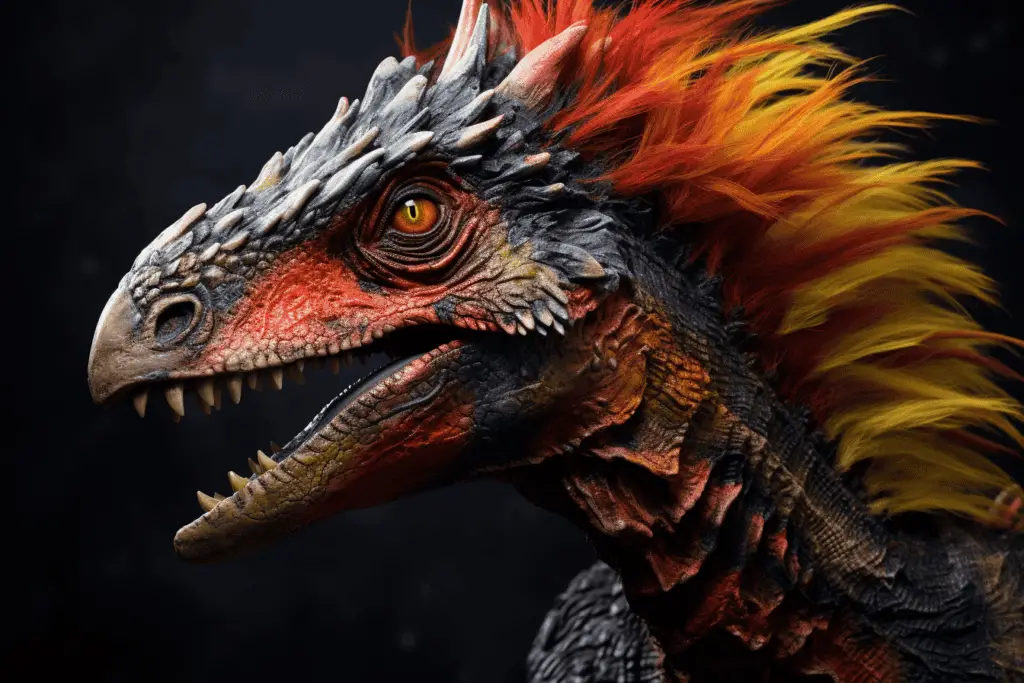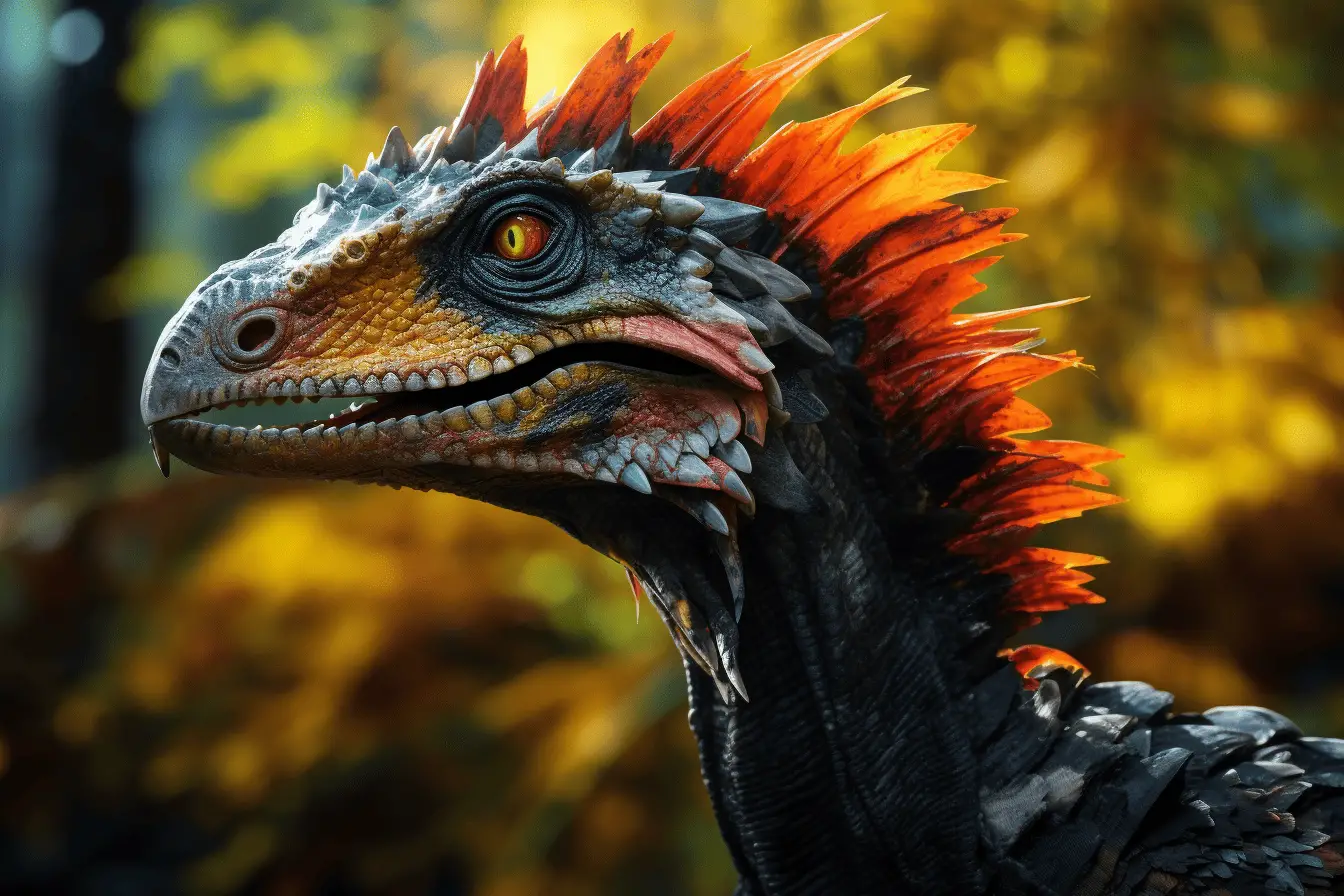The depiction of dinosaurs in the “Jurassic World” franchise without feathers is primarily due to a combination of scientific understanding at the time the original “Jurassic Park” was made, and continuity within the film series.
Why do the dinosaurs in Jurassic Park and Jurassic World not have feathers?
When the original “Jurassic Park” was created in the early 1990s, the scientific consensus on the presence of feathers in many dinosaur species was not as strong as it is today. The film heavily influenced public perception of dinosaurs, and its dinosaurs were modelled based on the scientific understanding and paleontological interpretations available at that time.
As paleontological research progressed, evidence supporting the presence of feathers in at least some dinosaur species (especially theropods, which include the ancestors of modern birds) grew stronger. However, the “Jurassic World” films chose to maintain the visual continuity with the original movies, which had already established a specific look for these creatures. This decision was also influenced by the iconic status of the original film’s portrayal of dinosaurs, which had become deeply ingrained in popular culture.
In the universe of the films, this continuity is sometimes explained with the idea that the dinosaurs are not pure genetic reconstructions of the ancient species, but rather genetically modified versions, created with some artistic liberties taken for the theme park setting. This explanation allows for the difference between the film’s portrayal and current scientific understanding.
What makes scientists believe dinosaurs had feathers?
The belief that many dinosaurs had feathers is grounded in several lines of scientific evidence:
- Fossil Evidence: The most direct evidence comes from the discovery of fossils showing impressions of feathers or feather-like structures. Over the past few decades, numerous well-preserved dinosaur fossils, particularly from the theropod group (which includes Tyrannosaurus rex and the ancestors of birds), have been found with clear indications of feathers. These fossils have been uncovered in various locations, most notably in China, where fine-grained sediment has preserved detailed imprints of feathers.
- Phylogenetic Analysis: Dinosaurs are part of a group called Archosauria, which also includes modern birds and crocodilians. Birds, which are essentially modern-day dinosaurs, obviously have feathers. Through phylogenetic analysis, which examines evolutionary relationships, scientists have determined that feathers likely evolved in a common ancestor of birds and many non-avian dinosaurs. This means that feathers are not just a bird characteristic but are present in a broader group of theropods.
- Molecular Evidence: Though rare, there have been instances where soft tissue and even remnants of proteins found in dinosaur fossils have been analyzed, offering more support for the presence of feathers or feather-like structures. In some cases, the molecular composition of these structures is similar to that of modern bird feathers.
- Developmental Biology: Research into how feathers develop in modern birds has also provided insights. The developmental processes and genetic pathways involved in feather formation in birds are complex and are thought to have evolved from simpler structures in their dinosaur ancestors.
- Functional Reasons: Understanding why feathers might have evolved also supports their presence in non-avian dinosaurs. Initially, feathers could have served purposes like insulation, display, or camouflage, before their role in flight in modern birds.
- Comparative Anatomy: Studying the anatomy of modern birds and comparing it with fossilized dinosaurs helps scientists infer the presence of feathers. Certain features in dinosaur fossils, like quill knobs (where feathers would attach in birds), provide strong indications of feathered limbs.
These diverse pieces of evidence collectively form a compelling argument that many dinosaurs, especially those closely related to birds, had feathers. The scientific consensus continues to evolve as more discoveries are made, further enriching our understanding of these ancient creatures.

Why did dinosaurs have feathers if they didn’t fly?
Dinosaurs having feathers despite not being able to fly can seem puzzling, but it’s important to understand that feathers likely evolved for purposes other than flight initially. Here are some key reasons why non-flying dinosaurs might have had feathers:
- Insulation: Feathers are excellent insulators. Many palaeontologists believe that feathers first evolved to help dinosaurs maintain a stable body temperature. This is especially important for smaller dinosaurs, which would have had a harder time retaining body heat due to their smaller volume-to-surface-area ratio.
- Display: Feathers could have been used for display, either to attract mates or intimidate rivals. Many modern birds use their feathers for these purposes, and it’s likely that some dinosaurs did the same. Bright colours or distinctive patterns in feathers could have been a significant part of dinosaur social behaviours.
- Camouflage: Feathers might have helped some dinosaurs blend into their environment, protecting them from predators or helping them sneak up on prey.
- Protection: In some species, feathers might have provided a physical barrier against elements, predators, or rivals. Some feathered dinosaurs are known to have had quill-like feathers, which could have been used defensively.
- Incubation of Eggs: Some fossil evidence suggests that certain feathered dinosaurs may have used their feathers to keep eggs warm, much like modern birds do.
- Evolution of Flight: In the evolutionary lineage that led to birds, feathers likely became more complex and specialized, eventually aiding in flight. But before this, their function was more about balance, insulation, or display rather than airborne mobility.
It’s important to note that not all dinosaurs had feathers. Feathered dinosaurs were mostly theropods, the group that includes the ancestors of modern birds. The variety in feather types and uses among these dinosaurs showcases the versatility and evolutionary advantages provided by feathers, beyond the singular function of flight.
Did dinosaurs actually roar?
The idea that dinosaurs roared, a common trope in movies and popular culture, is more speculative than factual. The truth is, we can’t be entirely sure what sounds dinosaurs made, but there are reasons to believe that the roaring sounds often portrayed in media might not be accurate.
- Lack of Vocal Cord Evidence: Dinosaurs, being reptiles, did not have vocal cords like mammals. Therefore, their ability to produce roaring sounds similar to lions or tigers is questionable. Most of the sounds that mammals make are due to these vocal cords, which dinosaurs lack.
- Birds and Crocodilians as Models: The closest living relatives of dinosaurs are birds and crocodilians. Birds can make a wide range of sounds, but these are typically not like the roars of large mammals. Crocodilians can make deep-blowing sounds, but again, these are not true roars. Both groups use structures other than vocal cords to produce these sounds.
- Possible Sound-Producing Structures: Some dinosaurs might have had other structures that could produce sound. For example, the hollow crests of some hadrosaurs (like Parasaurolophus) could have functioned as resonance chambers, potentially creating deep, trumpet-like sounds. But this is still speculative and based on the structure of the fossils.
- Non-Vocal Communication: Dinosaurs might have used other forms of communication, like body language, posturing, or even colouration, as many modern animals do. Additionally, some sounds could be made through mechanical means like clapping jaws, stomping feet, or rustling feathers.
- Environmental Factors: The environment in which dinosaurs lived might also have influenced the types of sounds they made. Dense forests or open plains could favour different kinds of sound communication.
In summary, while it’s a captivating idea, the classic “roar” of dinosaurs in movies is likely more fiction than fact. The actual sounds made by dinosaurs could have been quite diverse, but probably were different from the roars of large mammals that we’re familiar with today. Science continues to explore these mysteries, but until there’s more definitive evidence, much of what we think about dinosaur sounds remains speculative.
In Summery
In ‘Jurassic World,’ dinosaurs are depicted without feathers, adhering to the iconic imagery established in the original ‘Jurassic Park’ films, despite newer scientific evidence suggesting many dinosaurs had feathers. These feathers, found in various dinosaur species, were likely used for insulation, display, and other purposes beyond flight.




